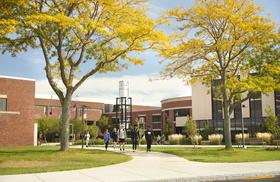Women in Community Colleges: What’s New in 2025
In recent years, the role of women in U.S. community colleges has grown in size, complexity and opportunity. As more female students enroll, balance family and work responsibilities, and progress toward credentials, stakeholders—including parents, students and educators—must understand the shifts in enrollment, tuition, program support and outcomes. This article updates our earlier coverage with 2025-era data, policy changes and real-world examples that reflect the evolving landscape of women in community colleges.
Enrollment Trends and Student Demographics
Women continue to comprise a significant—and in many cases majority—share of students in two-year institutions. According to the most recent data, about 58 % of students at community colleges are female. In the fall of 2023, public two-year colleges enrolled roughly six million students—about 37 % of all undergraduates in the U.S.
The gender gap in enrollment is also evident from broader higher-education statistics: for example, among 18- to 24-year-olds, women enrolled in college or graduate school at a rate of 43.8 % in 2025, compared with 34.2 % for men.
In terms of leadership, women are increasing their presence at the top of community college institutions: as of 2024, about 36 % of two-year college presidencies were held by women. Community College Daily+1
These trends reflect both access gains and persistent structural issues. For parents and students evaluating a community college, this means that institutions are increasingly oriented toward female learners—not just as a statistical majority, but as a target student population with distinct needs.
Tuition, Financial Aid and Affordability
Affordability remains a critical issue for female learners in community colleges, many of whom juggle employment, caregiving responsibilities and other financial pressures. From the most recent data: the average tuition and fees at public two-year institutions (in-district) are roughly $3,598 annually. The 2024-25 “sticker price” for public two-year colleges averaged about $4,050—up about 2.5% from the prior year.
Many states now offer “Promise” programs or last-dollar scholarships that cover all tuition and fees for in-state community-college students. For example, some states report in-district tuition as low as $1,440 for two-year institutions. College Board Research
For women students—especially those who are adult learners, part-time students or student-parents—these cost savings matter greatly. For example, the lower tuition at community colleges makes certificate or associate-degree paths more accessible for those balancing work and family.
Women Students’ Profiles and Success Factors
Female students at community colleges are a diverse group in terms of age, responsibilities and goals. Many are adult learners, returning to education after time in the workforce or after caregiving commitments. National research indicates that among community college students, approximately one-third of women are also mothers. Achieving the Dream+1 Further, single-mother students form a notable subset—one study reports that about 21 % of women in community colleges are single mothers.
Student-parents face unique challenges: balancing coursework with childcare, part-time employment and financial stress. Leading institutions are increasingly offering wrap-around services—childcare partnerships, flexible scheduling, mentoring, and comprehensive support designed with women’s needs in mind. For example, the Achieving the Dream initiative “Community College Women Succeed” highlights effective strategies for supporting adult women learners and student mothers.
Completion rates for women are also improving: among students who began their post-secondary journey in 2018, nearly 65 % of women earned a credential within six years, with an additional 8.6 % still enrolled. These improvements suggest that community colleges are making meaningful strides in supporting female students to credential completion.
Program Innovations and Policy Shifts
In 2025, several trends and policy shifts are notable in the context of women in community colleges:
Technology and AI-driven curricula: Many community colleges are embedding workforce-relevant skills—such as artificial intelligence, data analysis and automation—into certificate and associate-degree programs. This aligns with labour-market demand and provides new pathways for women seeking high-growth careers.
Tuition-free and low-cost models: States are expanding “community college promise” programs that eliminate tuition for qualifying in-district students. These decrease the upfront financial barriers that disproportionately impact women students with caregiving responsibilities. Education Data Initiative+1
Support for student-parents: Community colleges are increasingly designing dedicated supports for women who are parents—flexible scheduling, online/ hybrid classes, on-site childcare, mentorship and emergency assistance funds. This is part of the recognition that women’s educational trajectories are often shaped by intersecting demands.
Leadership representation: With about 36 % of two-year college presidents being women in 2024, there is a growing representation of women in institutional leadership. This shift may influence strategic priorities, culture and student support in ways beneficial to female learners.
Real-World Example: A Student Journey
Consider the case of Maria (pseudonym), a 32-year-old single mother of two living in the Midwest. She enrolled in a local community college while working part-time and using on-campus childcare to manage her schedule. Through a women-focused mentoring program and a low-tuition scholarship for community college students, she completed a healthcare-technician certificate in 18 months and is now working full-time with plans to continue to a bachelor’s degree. Her route reflects many of the emerging patterns: female adult learners leveraging accessible two-year institutions, balancing multiple roles, and using targeted support to succeed.
What Parents, Students and Educators Should Consider
For students and parents, key questions include:
What tuition and fees apply to in-district students, and is there a tuition-free or promise program available?
Are there flexible scheduling options (evenings, online, hybrid) that accommodate women with caregiving or work responsibilities?
What support services exist specifically for women and student-parents—mentoring, childcare, emergency assistance?
What are the workforce outcomes for female graduates of relevant programs—especially certificates and associate degrees?
For educators and institutions, the imperative is to:
Design programs with women’s life contexts in mind—adult learners, caregivers, part-time schedules.
Monitor completion and retention data disaggregated by gender and caregiving status.
Embed career-relevant pathways that align with growing demand, especially for women entering STEM or workforce-technical fields.
Expand leadership development for women in administrative roles to maintain momentum on gender equity across the institution.
For readers of sites such as PrivateSchoolReview.com and BoardingSchoolReview.com who may be comparing pathways, it is worth noting that community colleges offer a distinct, flexible alternative to traditional four-year institutions—particularly for women seeking affordability, open access and credential-driven outcomes.
Looking Ahead
The growing representation of women in community colleges, lower tuition barriers and targeted support services all signal encouraging momentum. Yet challenges remain: balancing work, family and studies; ensuring part-time students are supported; and closing equity gaps in completion. As the 2020s progress, the ability of community colleges to adapt to women’s lived realities will be critical to expanding opportunity—and fulfilling the sector’s promise as a gateway to careers and further education.
For prospective students, parents and educators, the key takeaway is this: community colleges in 2025 are more women-friendly than ever—but success depends on identifying the right institution, leveraging available support and aligning educational choices with both personal circumstances and labour-market realities.














